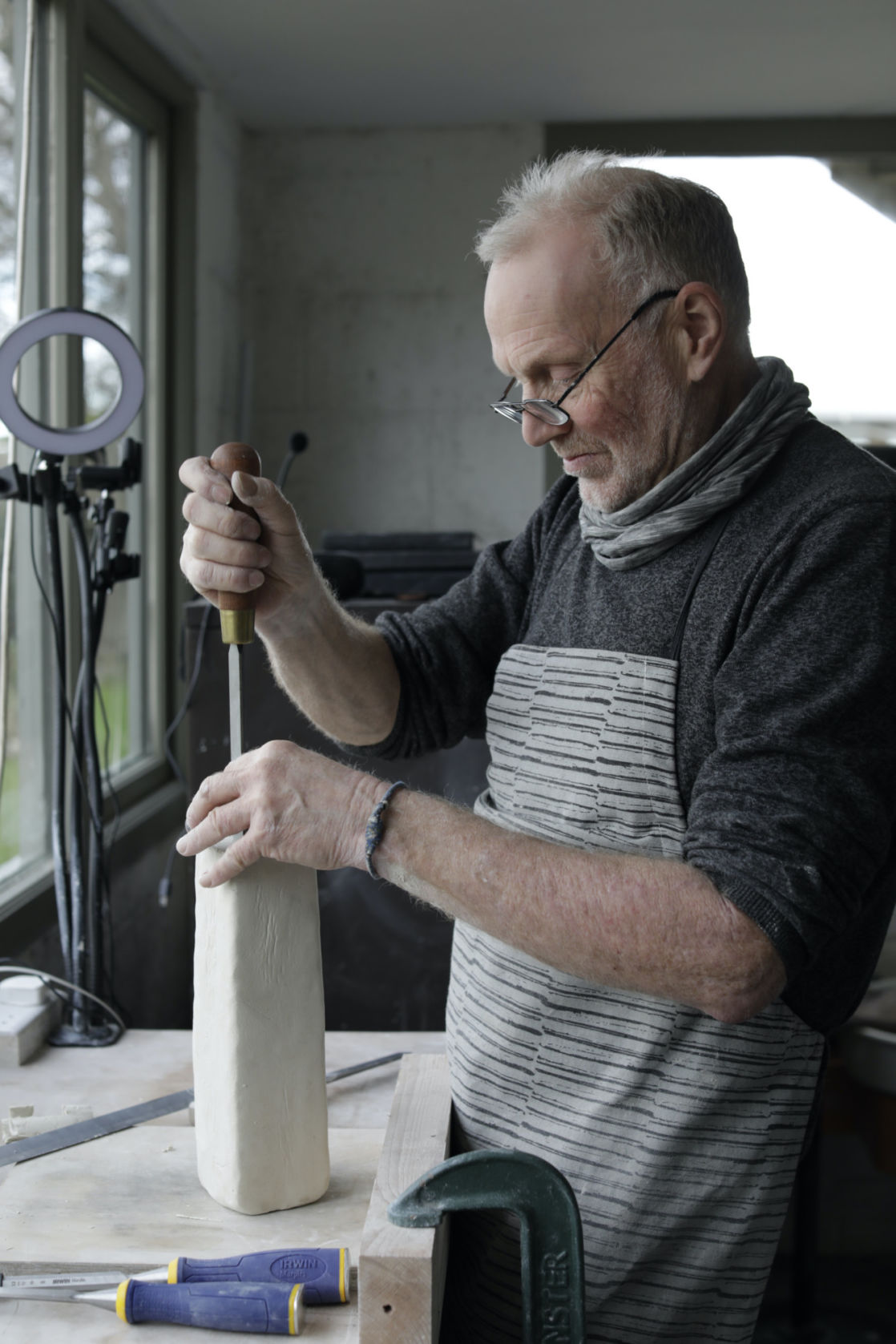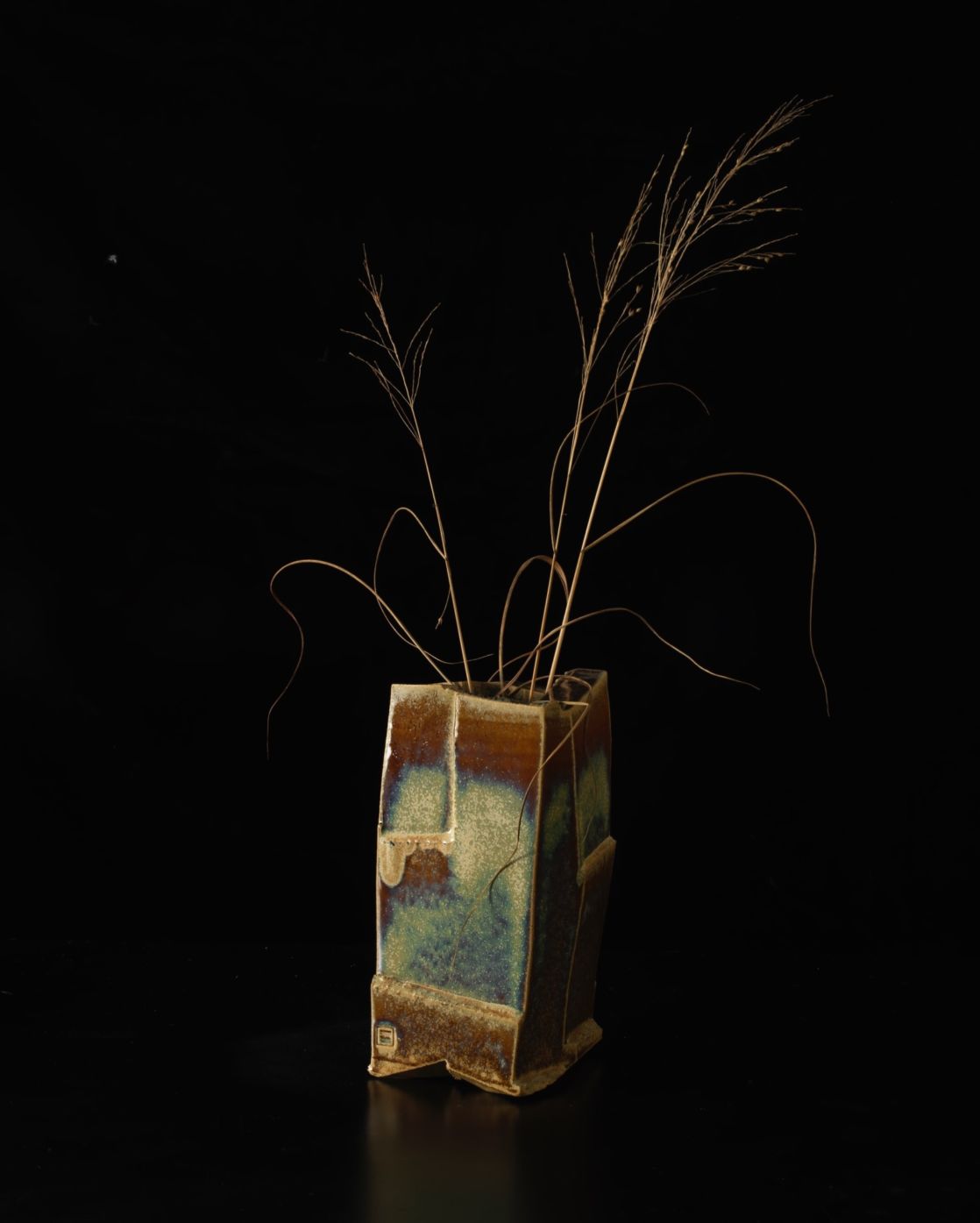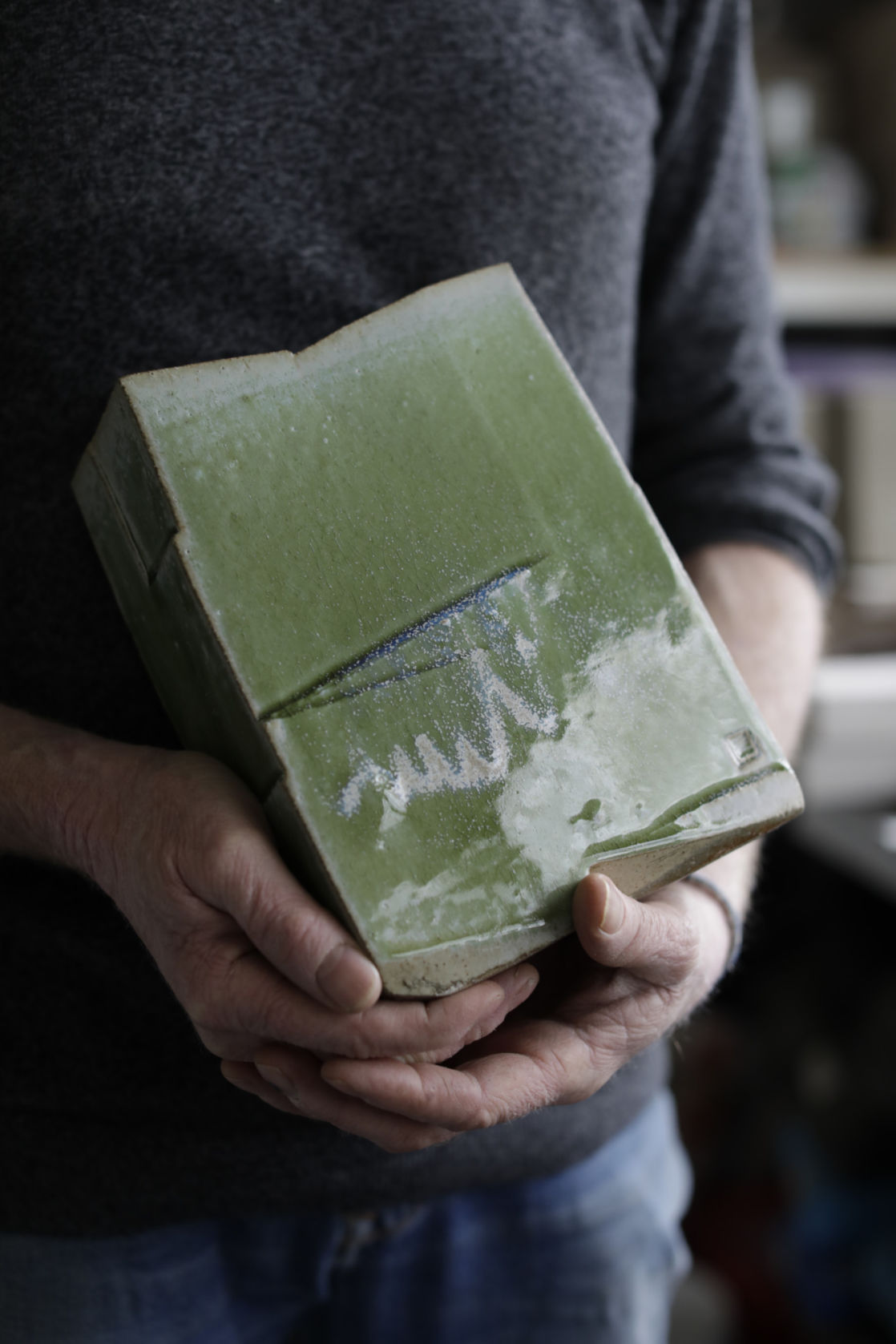Welcome to Ceramic Review
Ceramic Review is the magazine for contemporary and historical ceramics, ceramic art and pottery.
Ceramic Review Issue 334
July/August 2025
Ceramic Review is the magazine for contemporary and historical ceramics, ceramic art and pottery.
July/August 2025
Ceramicist David Binns shares the techniques and processes he uses to make and glaze one of his distinctive carved vessel forms
My life in clay spans almost 40 years, as a maker, teacher and researcher. Last year I retired from my teaching post at the University of Central Lancashire, where I ran the MA Ceramics programme and supervised a number of PhD students. Clay was however, not my first choice. In fact, following my first experience with the material on my foundation course, I chose to avoid all further ceramics classes.
As a child I was always making things in wood and my career aspiration was to be an architect. However, as it gradually dawned on me that architects did not actually make things by hand, my focus turned back towards wood and a place on the Wood, Metal, Ceramics course at Manchester Polytechnic.
Although we initially studied all material disciplines, my focus remained cabinetmaking. Then over time, I started developing an interest in clay, enjoying both throwing and the raku process. A chance introduction to Japanese gardens and traditional wooden architecture, sparked an interest in Japanese design and aesthetics, which has remained a significant guiding force within my creative practice.
Interviewing master raku maker David Roberts for my thesis changed the direction of my life. He offered me the opportunity to work with him in his studio and this led me to re-evaluate my career, so late into my degree I swung to majoring in ceramics. While working with David, in 1983, another chance situation led to a teaching position at the College of Art in Wrexham, North Wales.

Photo: Layton Thompson

Photo: Liz McBurney
Gaining a lecturing post in 1991 at the University of Central Lancashire led to more formalised involvement in research. Through my research I developed a unique material made through fusing together crushed recycled glass, ceramic and mineral waste. Through making large sculptural forms from the new material, I began realising the architectural and commercial possibilities of the material. Collaboration with PhD student Dr Alasdair Bremner led us to establish ALUSID, a university spin-out company that makes a range of architectural surfacing products from recycled waste, manifesting in numerous prestigious projects. I remain a consultant for the company.
As my work with aggregates and recycled waste now had a new life through ALUSID, I increasingly felt the urge to return to clay and explore new ideas. It was time to make glazed pots. Having taught glaze theory for nearly 40 years, I was able to apply some of that knowledge to my own work and my new carved vessel forms emerged.
I am naturally drawn to working clay in a firm leatherhard state, probably because I can get crisp cuts and edges as one might working with wood. Almost subconsciously, the tools I use are chisels and other sharp bladed woodworking tools. There is no doubt that my previous experiences of working in wood hugely informs my ceramic practice.
From the outset, I decided to limit my repertoire of glazes, relying on my knowledge of clay bodies and aggregate additions to create variations in colour and texture. I now use a single glaze, altered only through adding various oxides and opacifiers.
My making process combines elements of control and chance. While controlling the tool that slices and forms the clay, the blade often cuts in unexpected ways, creating tears and textures I had not foreseen. The way my glaze chooses to melt and run is also partly chance.
My work alludes to qualities I admire within the natural environment, but I am not consciously intending to imitate nature. Having a strong emotional regard for the Japanese aesthetic principles of Shibui, Shizen and Fukinsei, I hope my work conveys aspects of these values: unobtrusive quiet beauty, a harmonious relationship with nature, spontaneity and an appreciation of asymmetry and irregularity.
In a world that seems to be increasingly fast paced and challenging, I feel the ever-increasing need to focus on quiet contemplative work.
For more details visit davidbinnsceramics.com; alusid.co.uk

Photo: Layton Thompson